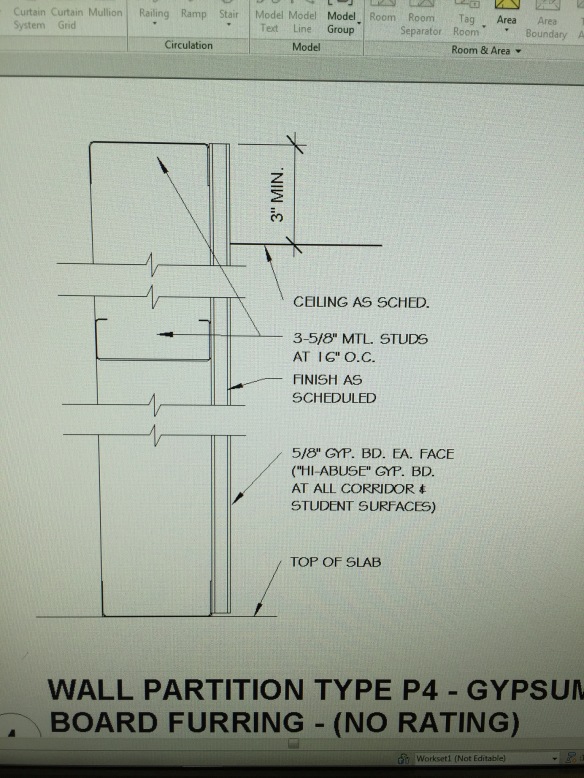
I’m adding to a discussion that is bouncing around the internet today, Architects answering 11 questions about their practice. Seeing as I technically have two full time “jobs” as an architect (I work for a big corporate firm as well as my own meager but awesome-tastic firm) I will answer these questions only once as they relate to my own firm. Because this is after all MY blog, and I can do that sort of thing. O_O
What kind of projects were you doing when you first started as an architect?
Early in my career I worked for the oldest surviving firm in Jacksonville, Florida. The work was primarily large commercial and institutional projects – mega churches, schools, universities, office buildings, etc. As I moved to a few other firms, getting smaller and smaller along the way, the work didn’t necessarily change, just the scale. I was still working on commercial and institutional work and frankly I hated it. I took on side projects very early in my career, designing residential additions for almost no fee just to be creative and work with the actual end users of a project. Fast forward to now and I am happy to stick to single family residential work and light commercial office and retail spaces as long as I can work with the actual end user and not a landlord or corporate board of directors.
How many projects can you expect to be working on at once?
This is a tough question to answer. I guess the blanket statement would be “as much as I can handle”. And, given my past track record is a lot. As a sole practitioner things get pretty busy around the 4-5 project mark for a given month. I like to have at least that many projects in various stages of development at any given time. More than that and I start to get a little stressed, but it’s a good stress. Any more than 7 would be too much work to cover the load by myself. Refer to next question.
How often did/do you work in a team?
I am structuring my firm so that I will hopefully always be working in a team. I am just one architect and my skills, though varied, are limited and the success of any project requires input from various sources. The goal is to have a network of other architects, locally and across the US, that I can pull from not just for inspiration and fellowship, but also to share work loads and project responsibilities to make us all more profitable.
How important is an innovative mind to the company?
Innovation is essential. Having the right tools and seeking out new tools to make you more agile and more efficient in what you do is essential no matter what type of business you run. But the caveat there is that a tool is only as good as the person using it. You have to have the right frame of mind in order to keep up with the curve, much less stay ahead of it.
What key things do you look for in potential new hires?
I don’t plan on outright hiring anyone, rather I look for other architects to partner with. Those architects that I’m interested in working with have to share my passion and sometimes outright obsession with architecture. I am not a 9-5 architect. Just ask my wife. I also look for architects who are as concerned with good design as they are about good drawings. A well designed building has to be represented by well designed drawings and details. Being relatively young in the profession I am a bit old school in that I came from a hand drafting background and I want my drawings to reflect that level of craft. I look for others who share that as well.
How important is diversity to your company?
I’m often a little apprehensive of this question because it’s never been an issue for me. Diversity in gender, ethnicity, religion and social views has always been a default for me. Like I said in response to the last question, I’m looking for architects with the same passion as me. I don’t care what your gender or skin color is, where you came from or what your religion is. Is it important? Of course. Do I seek out “diversity”? No. It just happens.
How big of a role does HR play in your company?
If we’re talking about Human Resources as a corporate structure, than it doesn’t apply at all. If we’re talking about Human Resources as in other humans that I find resourceful, then it’s extremely important. And this goes back to diversity – surrounding yourself and making alliances with other architects and designers that share your passion but in different ways.
Would you say Architecture is a field for everyone?
Seriously? This is a question? We all know that architecture is not for everyone. Just like mechanic, dentist, doctor, brick layer, foreman, CEO and President are not for everyone. Certain people have certain talents that drive them to certain paths in life. Architecture is no different. We are a rare bird.
What is the best asset in your company?
My family. My wife and my children drive me to be better each day. And my clients. Without them I would not have a company.
Describe your best employee in one word?
Conundrum. That’s actually how I was described by my classmates in college. I think it still applies today. I’m not easily defined and I try not to define myself.
What style architecture do you love most?
This is such an awesome question. And it’s one I’ve talked about with other architects from time to time. There are so many firms out there that have a “style”. So much so that you can drive around town and pick out buildings that were done by different firms without ever having seen them before. I am not that kind of architect. If you look at the work I have designed it runs the gambit from traditional to contemporary to modern and a lot more in between. At the end of the day the buildings I design are not mine. The belong to my client. So whatever style my client desires, it’s my job to provide that design.
I hope you enjoyed this little trip down the rabbit hole that is my new practice. Check out the architects below. They are even more awesome-er than I am (hard to believe I know).
Lee Calisti – Think Architect (twitter @leecalisti)
“architecture :: eleven questions is less than twenty”
Bob Borson – Life of an Architect (twitter @bobborson)
“Being an Architect”
Marica McKeel – Studio MM (twitter @ArchitectMM)
“Q+A with a Small Firm Architect”
Enoch Sears – Business of Architecture (twitter @enochsears)
“Life As An Architect”
Jes Stafford – Modus Operandi Design (twitter @modarchitect)
“Ask the Architect“
Mark R. LePage – Entrepreneur Architect (twitter @EntreArchitect)
“11 Big Questions” EntreArchitect.com/Episode37
Jeff Echols – Architect of the Internet (twitter @Jeff_Echols)
“11 Frequently Asked Questions About Being An Architect”
Nicholas Renard – Cote Renard Architecture (Twitter @coterenard)
“Answers from this Architect”
Evan Troxel – The Archispeak Podcast (twitter @etroxel)
“Eleven Questions About a Career in Architecture“
Andrew Hawkins, AIA – (twitter )
“Being an Architect: Questions Answered”





